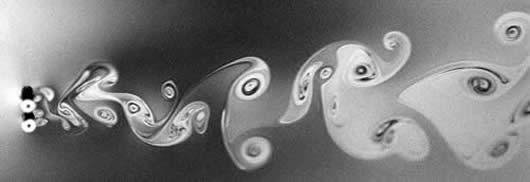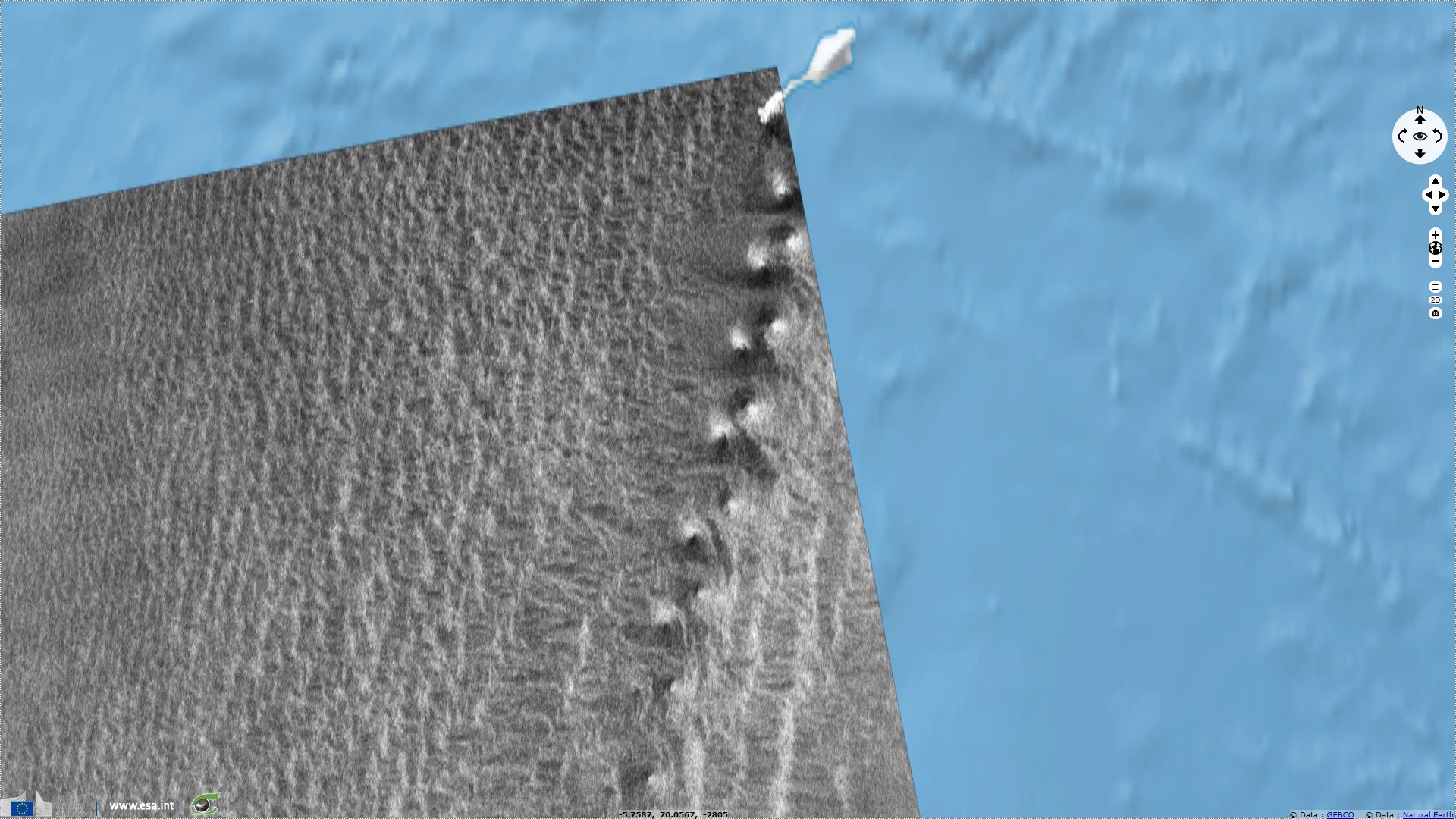Von Karman vortex streets over Van Mayen
Sentinel-1 CSAR EW acquired on 18 April 2016 from 17:53:29 to 17:54:34 UTC
Sentinel-1 CSAR EW acquired on 30 September 2016 from 06:57:58 to 06:58:37 and from 17:28:57 to 17:30:01 UTC
Sentinel-3 OLCI FR acquired on 30 September 2016 at 11:44:05 UTC
Sentinel-3 SLSTR RBT acquired on 27 March 2017 at 11:29:09 UTC
Sentinel-2 MSI acquired on 27 March 2017 at 12:31:31 UTC
Sentinel-1 CSAR EW acquired on 30 September 2016 from 06:57:58 to 06:58:37 and from 17:28:57 to 17:30:01 UTC
Sentinel-3 OLCI FR acquired on 30 September 2016 at 11:44:05 UTC
Sentinel-3 SLSTR RBT acquired on 27 March 2017 at 11:29:09 UTC
Sentinel-2 MSI acquired on 27 March 2017 at 12:31:31 UTC
Keyword(s): Atmosphere, island, mountain, Atlantic Ocean, Norway
In an article dedicated to Von Karman vortex streets, a NASA's OceanColor wrote: "Both the ocean and atmosphere are fluids, in constant motion. On our limited 'human'-scale, we are aware of this motion when we feel the wind blow, or when we encounter a current running along the beach while swimming. Yet our eyes alone can rarely observe the larger scale of fluid motion in the ocean and atmosphere."
"A vortex street is a linear chain of spiral eddies called von Karman vortices. Von Karman vortices are named after Theodore von Karman, who first described the phenomenon in the atmosphere. Dr. von Karman was a cofounder of NASA's Jet Propulsion Laboratory."
"Von Karman vortices form nearly everywhere that fluid flow is disturbed by an object. In the cloud images shown on this page, the 'object' that is disturbing the fluid flow is an island or group of islands. As a prevailing wind encounters the island, the disturbance in the flow propagates downstream of the island in the form of a double row of vortices which alternate their direction of rotation."
"The image below (courtesy of Cesareo de la Rosa Siqueira at the University of Sao Paulo, Brazil) is from an animation showing how a von Karman vortex street develops behind a cylinder moving through a fluid.


Animation representing the two-dimensional flow patterns behind a rounded obstacle, known as a Von Kármán vortex street - Source: NASA's OceanColor.
"As a fluid particle flows toward the leading edge of a cylinder, the pressure on the particle rises from the free stream pressure to the stagnation pressure. The high fluid pressure near the leading edge impels flow about the cylinder as boundary layers develop about both sides. The high pressure is not sufficient to force the flow about the back of the cylinder at high Reynolds numbers. Near the widest section of the cylinder, the boundary layers separate from each side of the cylinder surface and form two shear layers that trail aft in the flow and bound the wake."
"Since the innermost portion of the shear layers, which is in contact with the cylinder, moves much more slowly than the outermost portion of the shear layers, which is in contact with the free flow, the shear layers roll into the near wake, where they fold on each other and coalesce into discrete swirling vortices. A regular pattern of vortices, called a vortex street, trails aft in the wake."

"Von Karman vortices form at all scales of fluid motion. The picture above shows a complex vortex street formed in a flowing film of soap with two cylinders in the fluid flow" - Source: NASA's OceanColor.












